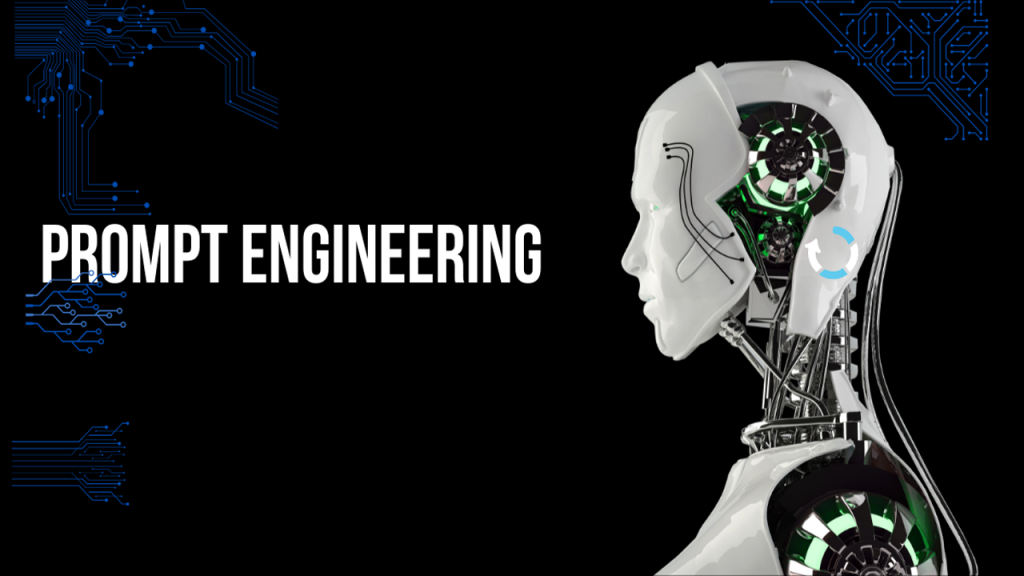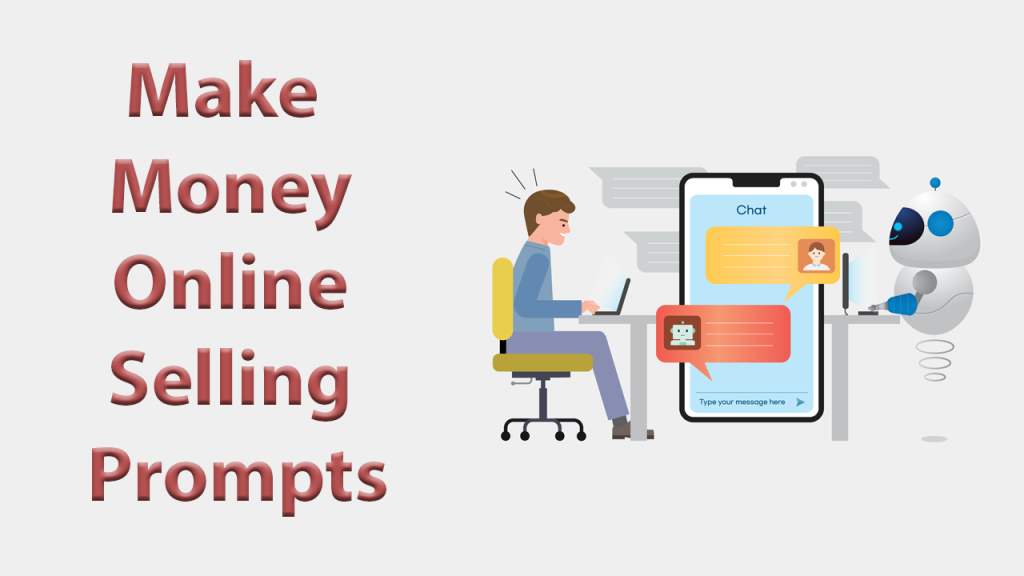In the ever-evolving landscape of artificial intelligence (AI), prompt engineering emerges as a pivotal technique driving innovation and efficiency. It encompasses the strategic refinement of large language models (LLMs) and the optimization of input for diverse generative AI applications. As the demand for tailored content surges, prompt engineering unveils new possibilities, ranging from crafting sophisticated robotic process automation bots to generating intricate 3D assets and scripts. Let’s delve into the realm of prompt engineering and explore its profound impact on the AI ecosystem.
What is prompt engineering?
Prompt engineering involves the strategic refinement of large language models (LLMs) and the optimization of input for various generative AI applications. This technique tailors specific prompts and desired outputs for LLMs, as well as fine-tuning input data for generating text or images. As generative AI evolves, prompt engineering becomes vital for creating diverse content types such as robotic process automation bots, 3D assets, scripts, and digital artifacts.
By leveraging zero-shot learning examples and specific datasets, prompt engineering optimizes LLMs for particular use cases, thereby enhancing their performance. While it finds widespread application in various generative AI tools, its prevalence is primarily driven by the large user base of existing tools compared to the developers creating new ones.
Prompt engineering integrates elements of logic, coding, and art, sometimes incorporating special modifiers. Inputs for prompts can encompass natural language text, images, or other data types. Despite the capability of most generative AI tools to process natural language queries, the same prompt may yield different outcomes across different tools. Additionally, each tool may offer unique modifiers to facilitate the specification of word weight, styles, perspectives, layout, or other response properties.
The importance of prompt engineering to AI
Prompt engineering is crucial for enhancing AI-driven services and maximizing the effectiveness of current generative AI tools.
To improve AI capabilities, prompt engineering aids in fine-tuning large language models (LLMs) and optimizing workflows for specific outcomes. For instance, within enterprises, developers may utilize prompt engineering to refine LLMs like GPT-3 for tasks such as powering customer service chatbots or handling specialized tasks like drafting industry-specific contracts. In such scenarios, prompt engineering ensures accuracy by aligning the AI system with specific requirements, such as reflecting existing clauses from the firm’s contract library.

Conversely, in customer service applications, prompt engineering facilitates efficient problem-solving by leveraging natural language processing (NLP) to generate tailored solutions from vast knowledge bases. This approach adapts the response based on the user’s skill level, providing concise summaries for experts and detailed step-by-step guides for novices.
Furthermore, prompt engineering is instrumental in safeguarding against prompt injection attacks, akin to SQL injection attacks, where malicious actors attempt to manipulate generative AI systems’ logic. By analyzing and refining prompts, developers can mitigate erratic model behavior caused by conflicting instructions or special modes.
Prompt engineering also addresses privacy concerns by identifying and rectifying vulnerabilities that could lead to unintended disclosures of sensitive information. Notably, the process is complex, as demonstrated by Microsoft’s experiences with the Tay chatbot and Bing Chat. Balancing improved outcomes with safety requires continuous refinement of prompt engineering strategies.
Moreover, prompt engineering enhances the performance of existing generative AI tools by assisting users in refining queries to achieve desired results. Whether it’s formatting text, code completion, or text-to-image synthesis, prompt engineering empowers users to fine-tune outputs according to specific criteria such as style, perspective, or resolution.
Examples of prompt engineering
Examples of prompt engineering span various content types, each tailored to specific needs:
Text
For text generation, platforms like ChatGPT and GPT offer versatile prompts:
- Clarify distinctions between generative AI and traditional AI.
- Provide 10 engaging headlines for “Top generative AI use cases for the enterprise.”
- Draft an article outline highlighting the benefits of generative AI in marketing, followed by 300-word sections and catchy section headlines.
- Craft five diverse 100-word product descriptions for ProductXYZ.
- Define prompt engineering in iambic pentameter, echoing Shakespearean style.
Code
In the realm of code generation, tools like ChatGPT and Codex enable innovative prompts:
- Assume the role of an ASCII artist, translating object names into ASCII code.
- Identify errors in a provided code snippet.
- Develop a function that multiplies two numbers and yields the result.
- Construct a basic REST API in Python.
- Analyze and simplify given code segments, or continue coding from provided snippets.
Image
For image synthesis, platforms such as Stable Diffusion, Midjourney, and DALL-E 2 excel in responding to visual prompts:
- Generate an image of a dog in a car wearing sunglasses and a hat, inspired by Salvador Dali’s style.
- Produce a claymation-style depiction of a lizard on the beach.
- Create a 4K resolution image capturing a man using a phone on a subway, with bokeh blurring for cinematic effect.
- Design a sticker illustration featuring a woman enjoying coffee at a checkered tablecloth.
- Render a lush jungle forest scene with dramatic lighting reminiscent of cinematic nature photography.
- Generate a first-person perspective image showcasing orange clouds during a sunrise.
Tips and best practices for writing prompts
The primary suggestion in prompt engineering is to initially experiment with expressing similar concepts in various ways to observe their effectiveness. Delve into different formulations seeking diversity in modifiers, styles, perspectives, authors, or artists, and formatting. This approach allows for discerning the subtleties that lead to more captivating outcomes tailored to specific queries.
Following this, seek out established strategies relevant to particular tasks. For instance, for those crafting marketing copy, exploring different methods of requesting variations, styles, and levels of detail can be beneficial. Conversely, when grappling with complex ideas, juxtaposing them with related concepts can aid in clarifying differences.
Additionally, it’s advantageous to manipulate the types of input within prompts. Examples, input data, instructions, or questions can compose a prompt, and experimenting with combinations thereof can be fruitful. While many tools impose input constraints, it’s feasible to provide instructions in one instance that guide subsequent prompts.
Once a basic understanding of a tool is attained, it’s worthwhile to explore its specialized modifiers. Various generative AI applications feature concise descriptors for properties like style, abstraction level, resolution, and aspect ratio, along with methods for assigning weight to prompt words. Leveraging these aids in articulating specific variations more precisely, streamlining prompt composition.
Furthermore, investigating prompt engineering integrated development environments (IDEs) can be valuable. These platforms facilitate prompt and result organization for engineers refining generative AI models and for users seeking specific outcomes. Engineering-centric IDEs encompass tools such as Snorkel, PromptSource, and PromptChainer, whereas user-oriented options include GPT-3 Playground, DreamStudio, and Patience.
Leveraging prompt engineering for content creation
In today’s digital landscape, content creation and personalization have become paramount for businesses seeking to engage and retain their audiences effectively. Leveraging prompt engineering offers a powerful solution to enhance these endeavors, enabling organizations to tailor their content with precision and relevance.
Prompt engineering provides a strategic framework for crafting prompts that elicit specific responses from generative AI models. By fine-tuning the inputs provided to these models, content creators can generate highly customized and engaging content across various mediums, including text, images, and code. This level of customization enables businesses to cater to the diverse preferences and interests of their target audience, thereby fostering deeper connections and driving increased engagement.
One of the key advantages of leveraging prompt engineering for content creation is its ability to streamline the creative process. Instead of starting from scratch, content creators can use carefully crafted prompts to guide the generation of content, saving time and resources while maintaining quality and consistency. Whether it’s drafting compelling marketing copy, producing visually stunning images, or developing innovative code snippets, prompt engineering empowers creators to unlock their full creative potential.
Moreover, prompt engineering facilitates personalized content recommendations and experiences for users. By analyzing user data and preferences, organizations can generate prompts that resonate with individual users, delivering content that is tailored to their unique interests and needs. This personalized approach not only enhances user satisfaction but also increases the likelihood of conversion and retention, ultimately driving business growth.
Additionally, prompt engineering enables dynamic content adaptation and optimization based on real-time feedback and insights. By continuously refining prompts based on performance metrics and user interactions, organizations can iteratively improve the relevance and effectiveness of their content over time. This iterative approach ensures that content remains fresh, engaging, and aligned with evolving audience preferences and trends.
In conclusion, leveraging prompt engineering for content creation and personalization offers a transformative opportunity for businesses to elevate their marketing efforts, enhance user experiences, and drive meaningful engagement. By harnessing the power of generative AI models and strategic prompt design, organizations can create highly customized and compelling content that resonates with their audience, ultimately driving business success in today’s competitive digital landscape.


